Myanmar Thanakha
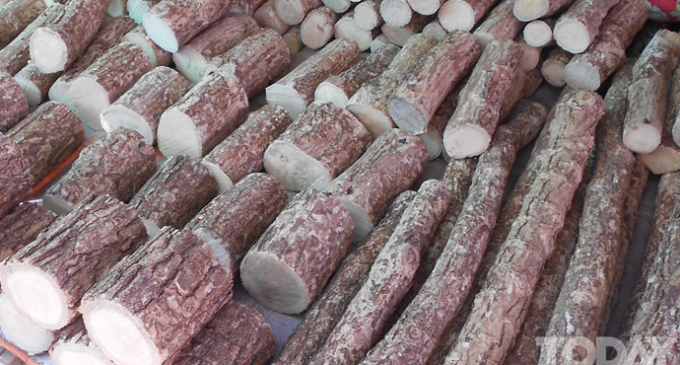
When boys and girls come of age they give out secretions of the body which have an unsavoury small, the secretions from armpits, foot and hand oils. The Myanmars, for generations, prevent this by applying Thanakha (a form of rouge got from grinding Thanakha bark) to the whole of the body even to the inner parts of it. By rubbing this Thanakha paste, according to the conventional wisdom, it cleans the blood and prevents sores from erupting over the body.
Myanmar women, rivalling their male counterparts, work in various stations of life in rain or sunshine; so they are likely to get Tin-Taik (Freckles) on their facial skin when they earn their living as farm-hands, labourers on the road or construction sites and as hawkers. And to protect their skin, they daily wear thick Thanakha paste on their exposed parts of their bodies, especially on their faces.
Four or five years ago a woman minister from the West visited our country, and she had a keen interest in this local rouge. When she paid a visit to Bago, she with her own hands rubbed the Thanakha bark on the Kyauk-pyin (a circular rock-slab with a smooth face) and applied the paste thickly on her face. Apart from its medicinal properties, the Thanakha paste makes your body pleasant in smell as it is the perfume of nature, the natural product of our country.
 The beauty products__makeups, powders, deodorants, rouges__develop with the progress of modern world, but whatever progress may be, some claim to have suffered from the long-time side effects or allergic properties of these modern products. In the famed “Ripley’s Believe it or Not” book, the Duchess of Coventry Maris Gunning (1733-1760) died at the age of 27 from choking due to her facial makeup.
The beauty products__makeups, powders, deodorants, rouges__develop with the progress of modern world, but whatever progress may be, some claim to have suffered from the long-time side effects or allergic properties of these modern products. In the famed “Ripley’s Believe it or Not” book, the Duchess of Coventry Maris Gunning (1733-1760) died at the age of 27 from choking due to her facial makeup.
Thanakha’s History
Historians believe that the practice of wearing Thanakha started during the Thirikhetaya and Beik-thanoe periods, over a thousand years ago. About 5th century AD there were three wide plains in the country of old Myanmar, and classical literature recorded the use of Thanakha by both men and women in these three areas: Kyaukse plain in Thu-nar-pa-ran-ta Taing, Minbu plain in Tam-pa-wedi Taing and Shwebo plain in Mu river valley in Ah-pa-ran ta-Taing
Taung Ni Thanakha or Shin Ma Taung Thanakha
According to the oral history of the natives of Yesagyo and Pakhan, legend has it that during travels of Bagan King AlaungSithu on his royal barge he came to the Taung Ni hill, a little distant from Pakhan-gyi town, and his queen spilled Thanakha paste from her make-up box. To this day the Thanakha tree, grown in the areas around Taung Ni and Shin Ma Taung hills, is more blessed with the sweet aroma than those grown in other parts of the country.
ShweboThanakha
There was and area of land a little down from the Anyar Thiha Taw Pagoda on the west bank of Ayeyarwady river in Khin Oo Township, Shwebo District. During the reign of King Alaungpaya, the founder of the last Kanbaung dynasty, that plot of land called Thein Kadaw was excluded when the compound of the pagoda was demarcated and donated, and so it was called Ta Kwet (a single plot), and that in our Myanmar language degenerated into it’s present term Ka Bwet. The Thanakha grown around that KaBwet and nearby villages were regularly offered to the Shwebo court of King Alaungpaya. And that scented ShweboThanakha was described in Bongyi Thansogs (rice planting songs) of classical literature.
On January 2, 1934 before the last world war the innwa bridge was opened, and the crowd of onlookers from nearby Sagaing and even from Shwebo came to see the event on bullock carts, resting in the shady places along the bank. The women folk carried with them ShweboThanakha cut-pieces, ground them on Kyauk-pyins and applied themselves with the paste while waiting for the ceremony. The late eminent woman writer and journalist Dagon Daw Khin Khin Lay hired a bullock cart for a Kyat to witness the event. And the famed Mandalay composer Nandaw Shei (east of palace) Saya Tin, who was invited to the event, come over to Sagaing and composed the famous song “Shwebo Thanakha” in no time. Whenever you see round patches of Thanakha on the cheeks of a beautiful damsel you will find yourself singing that hit song “ShweboThanakha”
Where it is grown
The Thanakha trees are grown in India and in some parts of Southeast Asia. In India it can be found in western and southern states, the north-western part of the Himalayas, Bihar state and Assam. In Thailand it grows around the areas of Chaing Mai, and in Myanmar it is chiefly found in Pakkoku, Shwebo and Magwe districts. The best local names famous for its quality are from Shin Ma Taung hill in Pakhangyi Township, Ka-Bwetthanakha from Khin Oo Township in Shwebo district, and Kok-ko-Khwa village Thanakha near old Pyu city of Beik Thanoe in Taung-dwin-gyi Township.

The usefulness of the Thanakha tree is mostly ignored, and only the tree’s bark is well known for its beautifying purposes. If the free is left unfelled for a long time the free can grow to a girth of 4 to 6 feet in city of Beik Thanoe in Taung-dwin-gyi Township.
The usefulness of the Thanakha tree is mostly ignored, and only the tree’s bark is well known for its beautifying purposes. If the free is left unfelled for a long time the tree can grow to a girth of 4 to 6 feet in circumference and to a height of 60 feet, records say. The density of this hardwood is that I cubic feet weights 61.5 pounds; the wood is used for various needs: combs, beads, boxes, flat ladles, smoking pipes, axles for bullock cartwheels, pestles for rice and oil poundings, etc.
Modern technology has turned our world into a global village, and the natural resources are dwindling to extinction. Myanmar Tanakha, our blessed natural resource free from the allergies of man-made products, is nature’s blessing to beautify us. So let us not make ourselves ugly by felling indiscriminately this precious scented free to extinction.
Maung Hla Phwar
./wp-content/uploads/2018/10/Emirate-Online-TDY.png)







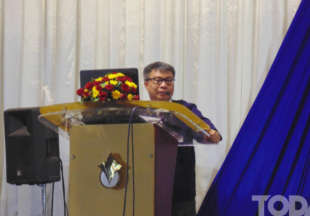


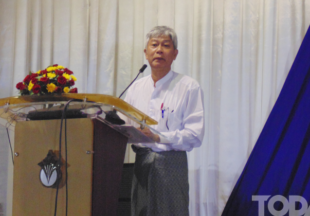
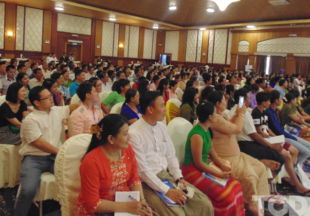



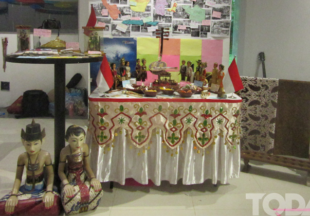

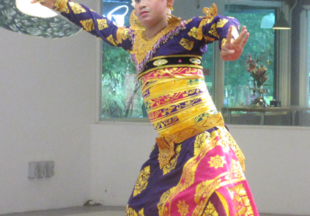

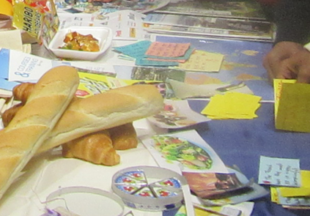













There are no comments at the moment, do you want to add one?
Write a comment